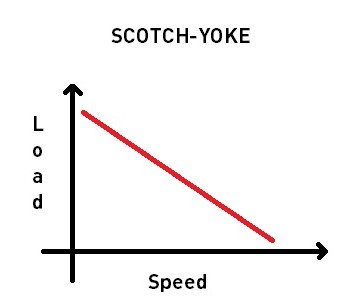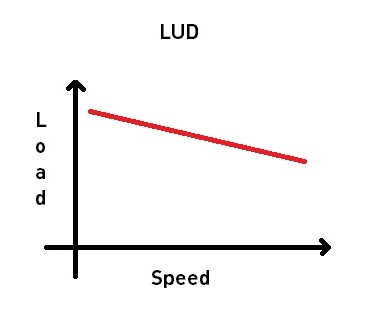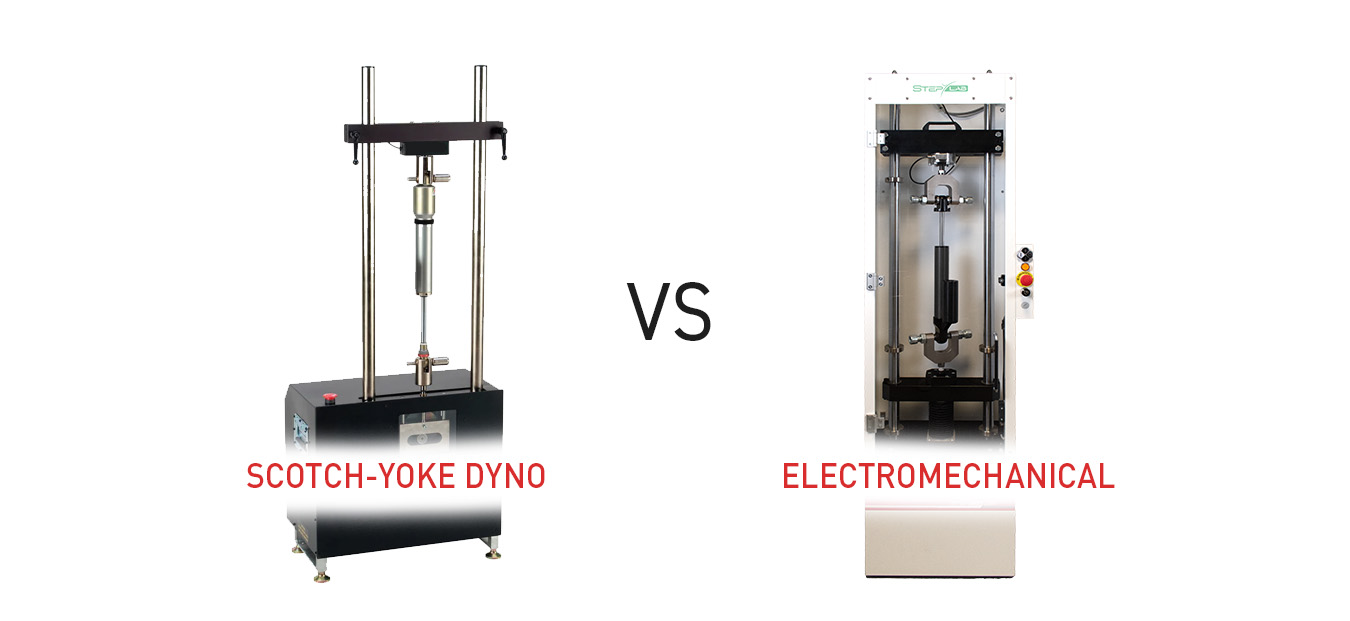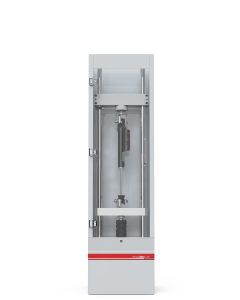Confronto tra banchi prova ammortizzatori: Scotch-Yoke vs elettromeccanico (LUD)
I banchi di prova sono strumenti essenziali per valutare le prestazioni e la durata degli ammortizzatori di vari veicoli.
La scelta del giusto tipo di meccanismo per il banco ammortizzatori può influire in modo significativo sulla sua precisione, efficienza e costo.
Questo articolo esplora due approcci distinti: i banchi prova Scotch-yoke e le macchine di prova per ammortizzatori con attuatori elettromeccanici. Comprendere le differenze fondamentali tra questi sistemi è fondamentale per prendere una decisione informata su quale tecnologia si adatta meglio alle vostre esigenze di prova.
Come funzionano i sistemi Scotch-Yoke?
La distinzione tra questi sistemi va ben oltre i loro principi di funzionamento di base.
Il meccanismo scotch-yoke è incentrato su un disco rotante con un perno sfalsato che si innesta con un giogo scorrevole. Quando il disco ruota, azionato da un motore elettrico tramite un riduttore o una trasmissione a cinghia, il perno sfalsato si muove lungo un percorso circolare. Il giogo, vincolato al movimento verticale, trasforma questo movimento rotatorio in un movimento lineare alternato. Questa trasformazione meccanica produce naturalmente un movimento sinusoidale, che è stato a lungo lo standard per i test di base sugli ammortizzatori. La relazione tra la rotazione del disco e il movimento del giogo è fissata dalla geometria del sistema, creando un modello di test prevedibile e affidabile.
Come funzionano le macchina di prova ammortizzatori elettromeccaniche?
Al contrario, i banchi prova elettromeccanici rappresentano la tecnologia più avanzata nel campo dei test, grazie all’impiego di una sofisticata combinazione di servomotori e viti di precisione. Il cuore di questi sistemi è costituito da un servomotore che lavora in combinazione con un meccanismo a vite a sfera.
Questa integrazione crea un sistema di azionamento diretto che converte il movimento rotatorio in un preciso movimento lineare.
La rotazione del servomotore aziona la vite di precisione, che a sua volta muove un blocco portante verso l’alto e verso il basso con una precisione eccezionale.
Questo blocco di supporto, collegato all’ammortizzatore, fornisce il movimento di prova. I moderni sistemi di controllo monitorano e regolano il movimento in tempo reale, consentendo profili di prova complessi in grado di riprodurre con precisione le condizioni di guida reali.
STEP Lab ha introdotto questa tecnologia avanzata sul mercato con LUD, un innovativo banco prova elettromeccanico che incarna questi principi colmando il divario tra le macchine di prova elettrodinamiche di fascia alta e i semplici sistemi Scotch-yoke. Il sistema offre solide capacità di prova, tra cui:
- Potenza motore: 20/28 HP
- Carico massimo: fino a 20 kN
- Corsa variabile: fino a 350 mm
- Replica profili stradali
- Corsa e velocità regolabili tramite software
Questa combinazione di design meccanico robusto e sistemi di controllo avanzati rende LUD la soluzione ideale per i produttori che cercano test di resistenza agli urti di livello professionale senza la complessità e i costi dei banchi di prova di fascia alta.
Elettromeccanico vs Scotch-yoke: pro e contro
Le soluzioni elettromeccaniche offrono un livello di controllo e adattabilità che i sistemi meccanici tradizionali faticano a eguagliare. Il loro approccio a trasmissione diretta, combinato con un servocomando avanzato, consente praticamente qualsiasi profilo di movimento: un vantaggio essenziale per testare i moderni sistemi di smorzamento adattivo o sviluppare ammortizzatori di nuova generazione. Grazie al controllo preciso della forza e della posizione durante tutta la corsa, questi sistemi sono in grado di riprodurre le condizioni di guida reali con una precisione senza pari. Inoltre, la loro natura elettronica consente di modificare senza sforzo i profili di prova, eliminando le regolazioni meccaniche e rendendo il processo di prova più efficiente e a prova di futuro.
- Controllo della forza e della posizione senza pari durante tutta la corsa
- Profili di movimento completamente personalizzabili per esigenze di test complesse
- Potrebbe essere necessaria una breve formazione
- Investimento iniziale più elevato
I sistemi Scotch-yoke, invece, seguono un principio meccanico più semplice e consolidato. La loro affidabilità e la capacità di funzionare ad alta frequenza li rendono una scelta pratica per i test di durata e gli ambienti di produzione ad alto volume. Tuttavia, il loro modello di movimento sinusoidale fisso impone limitazioni intrinseche, riducendo la loro flessibilità per i moderni requisiti di test. Sebbene offrano un investimento iniziale inferiore e requisiti di controllo più semplici, la loro adattabilità è fondamentalmente limitata.
- Design semplice e consolidato
- Investimento iniziale inferiore
- Modello di movimento sinusoidale rigido
- Adattabilità limitata per scenari di test avanzati
| Feature | Scotch-Yoke | LUD |
|---|---|---|
| Stroke | Fixed / Mechanically adjustable | Fully variable via software |
| Cycle types | Sinusoidal only | Sinusoidal, triangular, etc. (software programmable) |
| Load vs Peak velocity |  Extremely low |  Comparable to load at maximum speed |
| Road profile reproduction | No | Yes |
| Data acquisition and control electronics | Typically low-end | Test Center by STEP Lab – same as high-end machines (HUD/XUD) |
| Available stroke | Max 100 / 150 mm | 350 mm |
| Price | From €12,000 to €25,000 | Starting from €19,900 * |
Quindi, quale sistema di test scegliere?
La scelta tra queste due tecnologie dovrebbe basarsi su una chiara comprensione delle vostre esigenze di collaudo e dei vostri obiettivi a lungo termine. Con la continua evoluzione dei collaudi automobilistici, i veicoli moderni fanno sempre più affidamento su sofisticati sistemi di sospensione che richiedono soluzioni di collaudo precise e adattabili. I sistemi elettromeccanici si distinguono in ambienti di sviluppo in cui lo smorzamento adattivo richiede una valutazione completa in un’ampia gamma di condizioni.
La loro capacità di riprodurre profili stradali complessi e di passare senza soluzione di continuità da un modello di prova all’altro li rende particolarmente adatti alla ricerca e all’innovazione. >Serie LUD
Le considerazioni sul budget vanno oltre l’investimento iniziale.
Mentre i sistemi Scotch-yoke hanno generalmente un costo iniziale inferiore, il quadro finanziario a lungo termine è più sfumato.
I sistemi elettromeccanici, nonostante il loro investimento iniziale più elevato, spesso compensano i costi con minori esigenze di manutenzione e una maggiore flessibilità di collaudo. Al contrario, la semplicità meccanica dei sistemi Scotch-yoke può portare a costi di riparazione più bassi quando è necessaria la manutenzione, ma la loro usura meccanica intrinseca può comportare una necessità di manutenzione più frequente nel tempo.
Macchina elettromeccanica per prove su ammortizzatori – LUD
Conclusioni
La scelta tra banchi prova elettromeccanici e banchi prova scotch-yoke dipende da un’attenta valutazione dei requisiti di prova, dei vincoli di budget e delle esigenze di prova a lungo termine.
I sistemi elettromeccanici offrono una flessibilità senza pari e un controllo preciso, rendendoli ideali per requisiti di collaudo sofisticati e applicazioni di ricerca. I sistemi Scotch-yoke forniscono soluzioni di collaudo affidabili ed economiche, particolarmente adatte al collaudo di produzione ad alto volume con parametri costanti. La comprensione di questi fattori garantisce che il sistema selezionato fornirà le capacità di collaudo necessarie, offrendo al contempo valore aggiunto per tutta la sua durata operativa.





